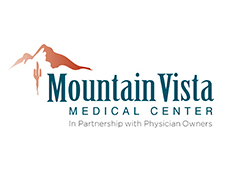Ultrasound Cardiology Of Venous Thrombosis
Venous thrombosis is a condition which is made up of a combination of deep vein thrombosis and pulmonary embolism. It’s one of the most common cardiac disorders, in fact ranking as the third most common condition right below ACS (acute coronary syndrome) and stroke. Venous thrombosis is a medical condition that is quite often overlooked, is often hereditary, and tends to recur later on in life.
In the field of cardiology, there has been research on how these conditions show up in ultrasound images. Cardiologists have performed compression ultrasounds with Doppler imaging on pregnant women, and they have discovered that the location of the deep vein thrombosis is almost always in the calf veins with non-pregnant women. There’s only a six percent change that a pregnant woman will have deep vein thrombosis in the calf region, and the majority of pregnant women have thromboses in the ileofemoral veins. These research studies that were done on pregnant women are not capable of being verified for statistical accuracy, and only the sonogram was used for the diagnosis. That’s because of the danger of exposing a developing fetus to radiation from the typical method of determining locations of DVT.
Avoiding radiation isn’t the only reason for using the ultrasound method for diagnosing deep vein thrombosis. While those in the radiology department will certainly advocate using radiation-based methods for diagnosing the disease with the highest accuracy, sometimes a quick emergency diagnosis needs to be made. It takes as little as four minutes to have a quick diagnosis that’s 98% as good as what the radiology will return. That is, of course, with trained doctors who have experience with ultrasound technology. With the average emergency room doctor, it’s more around 85%. Cardiology requires quite a lot of experience to perform effectively, so you should not rely on a diagnosis that’s determined solely in the emergency room. The ultrasound technique can work just about as well as radiology, but the doctor you get makes all of the difference.
There is still more ongoing research into the ultrasound mapping of venous thrombosis. That’s not to say that radiology should be avoided. But, it’s accuracy is largely a factor of being the de-facto method of diagnosis, thus it gets the same kind of treatment as the ultrasound methods got in the test with pregnant women. You may want to talk to your cardiologist if you have had a serious reaction to radioactive elements, for the prospect of getting a good diagnosis through other means.
Deep vein thrombosis and pulmonary embolism are heart conditions that can cause problems for people from all walks of life. Becoming physically fit and maintaining a healthy lifestyle is a great choice and will help to avoid many heart problems. However, venous thrombosis will not be prevented through diet and exercise. If you have a family history of venous thrombosis or the related conditions associated with it, you should definitely talk to your cardiologist to get an evaluation done. If you are based in Phoenix, you should visit the following website – Phoenix Cardiologists.












Leave a Reply